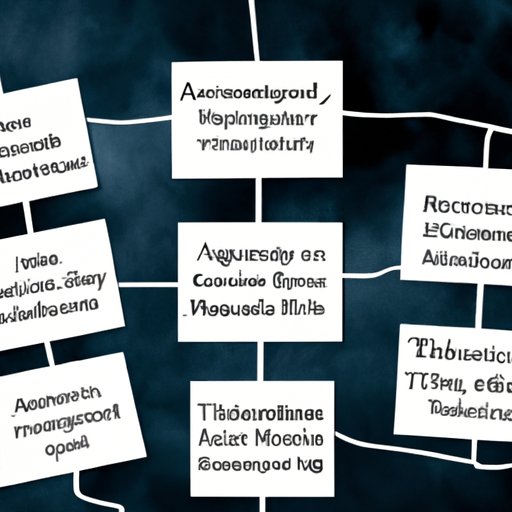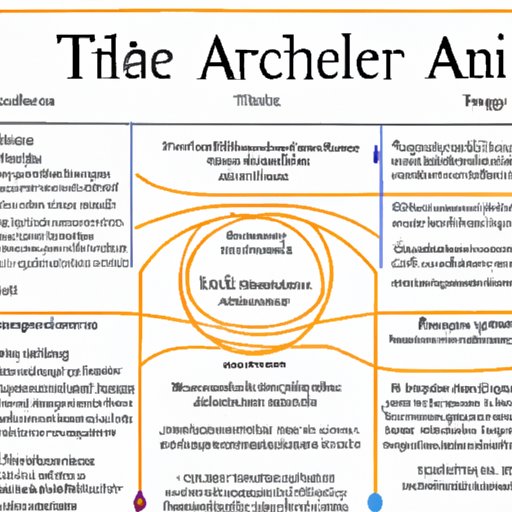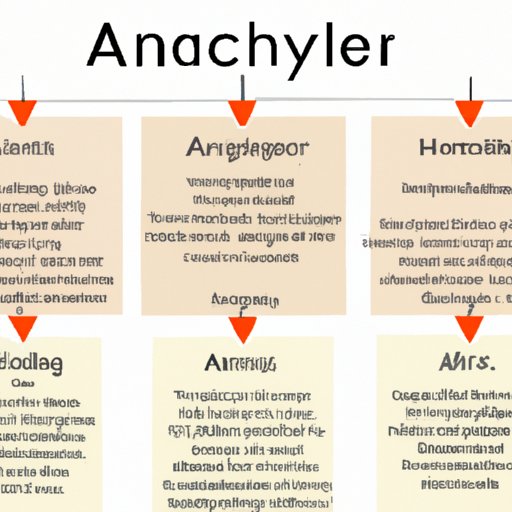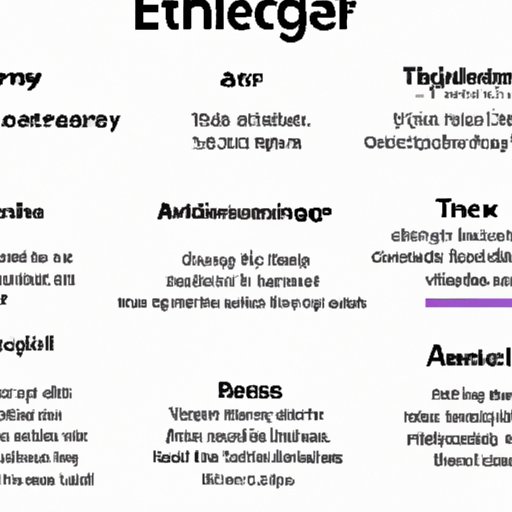Introduction
Archetypes are recurring symbols, characters, motifs, or ideas that appear in literature, art, mythology, and culture. They are used to create meaningful connections between stories and characters that have been told throughout history. Archetypes can be used to explore themes, provide insight into characters and their motivations, and even suggest certain outcomes. This article explores what archetypes are in literature and provides a comprehensive guide to understanding their origin and meaning.
An Analysis of Archetypes in Literature
What are archetypes? In literature, an archetype is a universal symbol or motif that recurs throughout stories, myths, and cultures. It is often used to convey a particular theme or message in a story. Archetypes are often found in the form of characters, such as the hero, villain, or mentor, as well as symbols, such as the quest or journey. There are many different types of archetypes in literature, each with its own unique characteristics and meanings.

Exploring the Origin and Meaning of Archetypes in Literature
The origin of archetypes can be traced back to ancient mythology and folklore. In these stories, archetypes were used to explain the world and its mysteries. For example, in Greek mythology, the hero archetype was used to explain why some people achieved greatness, while others failed. Over time, archetypes have become a common tool used by writers to communicate complex messages and themes in a concise manner.
The meaning of archetypes in literature is dependent on the context in which they are used. Generally, archetypes represent universal themes or ideas that are common to all people, regardless of culture or background. These themes can include good versus evil, the power of love, or the importance of courage. By using archetypes, writers are able to evoke emotions and convey messages in a way that resonates with readers on a deeper level.

A Comprehensive Guide to Archetypes in Literature
Now that we know what archetypes are and where they come from, let’s explore how to identify them in literature. To do this, it is important to understand the different types of archetypes and their associated meanings. Examples of archetypes in literature include the hero, the villain, the mentor, the outcast, the everyman, the trickster, the rebel, and the underdog.
In addition to recognizing the various types of archetypes, it is also important to consider how they are used in literature. Generally, archetypes are used to represent a specific theme or message in a story. For example, the hero archetype might be used to represent courage and perseverance, while the villain archetype could be used to illustrate the consequences of greed and selfishness. By looking for these types of motifs in literature, readers can gain a better understanding of the author’s intentions.
Archetypes in Literature: Examining Common Themes Across Genres
Archetypes are not limited to any one genre of literature. In fact, they can be found in both fiction and non-fiction works. In fiction, archetypes are often used to create memorable characters or illustrate universal themes. For instance, the hero archetype might be used to represent courage and hope in a fantasy novel, while the villain archetype might be used to represent corruption and greed in a crime novel.
In non-fiction works, archetypes can be used to explore cultural issues or suggest solutions to problems. For example, a non-fiction book about education might use the mentor archetype to explore the importance of mentorship in children’s development, or a book about poverty might use the underdog archetype to illustrate the struggles faced by those living in poverty.

Understanding Archetypes in Literature Through Classic Examples
To better understand archetypes in literature, it can be helpful to examine classic examples from both classical and modern literature. In classical literature, archetypes are often used to explore timeless themes. For example, in Homer’s epic poem The Odyssey, the hero archetype is used to represent Odysseus’ determination and courage as he embarks on a dangerous journey home.
In modern literature, archetypes are often used to explore more contemporary themes. For example, in J.K. Rowling’s Harry Potter series, the hero archetype is used to represent Harry’s courage and determination as he faces off against the evil Lord Voldemort. Meanwhile, the villain archetype is used to illustrate Voldemort’s maliciousness and ambition.
Conclusion
Archetypes are powerful symbols and motifs used in literature to convey complex themes and messages. They can be found in both fiction and non-fiction works and are often used to explore timeless ideas, such as good versus evil, or the power of love. By understanding the various types of archetypes and recognizing the ways in which they are used in literature, readers can gain a better appreciation for the stories they read.
In conclusion, archetypes are deeply embedded symbols and motifs used to convey powerful messages in literature. By exploring classic examples from both classical and modern literature, readers can gain a better understanding of the origin and meaning of archetypes in literature.
(Note: Is this article not meeting your expectations? Do you have knowledge or insights to share? Unlock new opportunities and expand your reach by joining our authors team. Click Registration to join us and share your expertise with our readers.)
